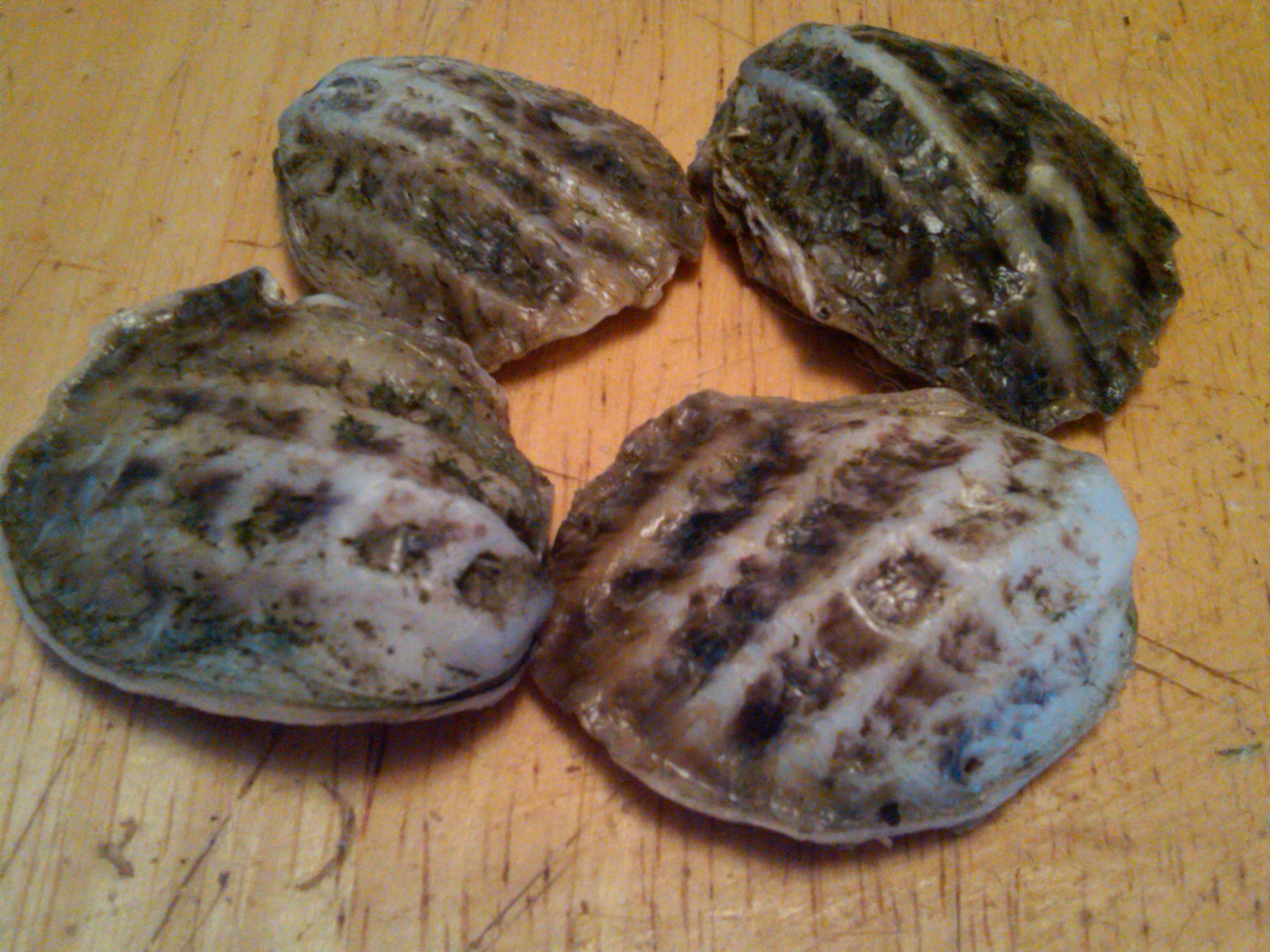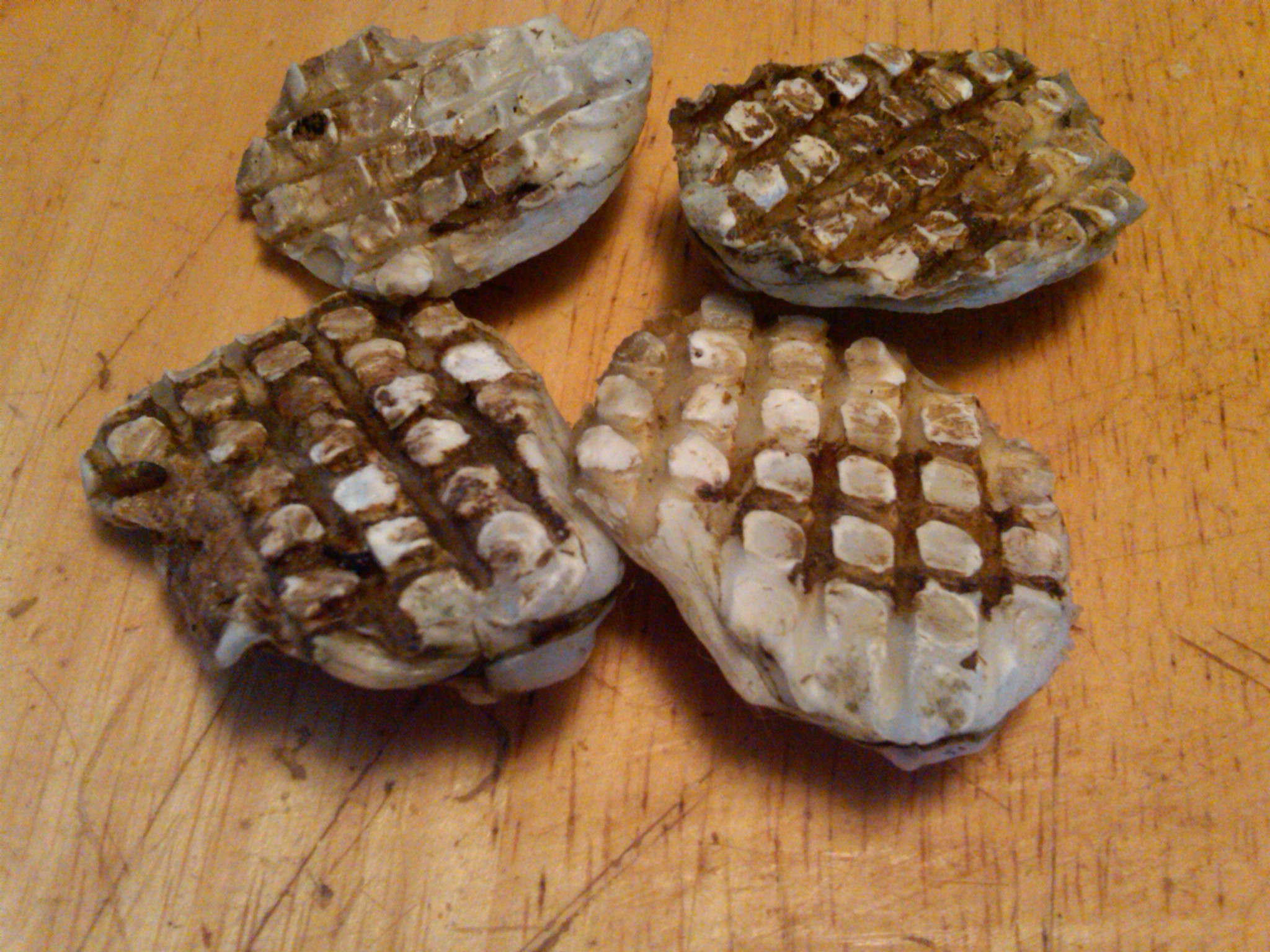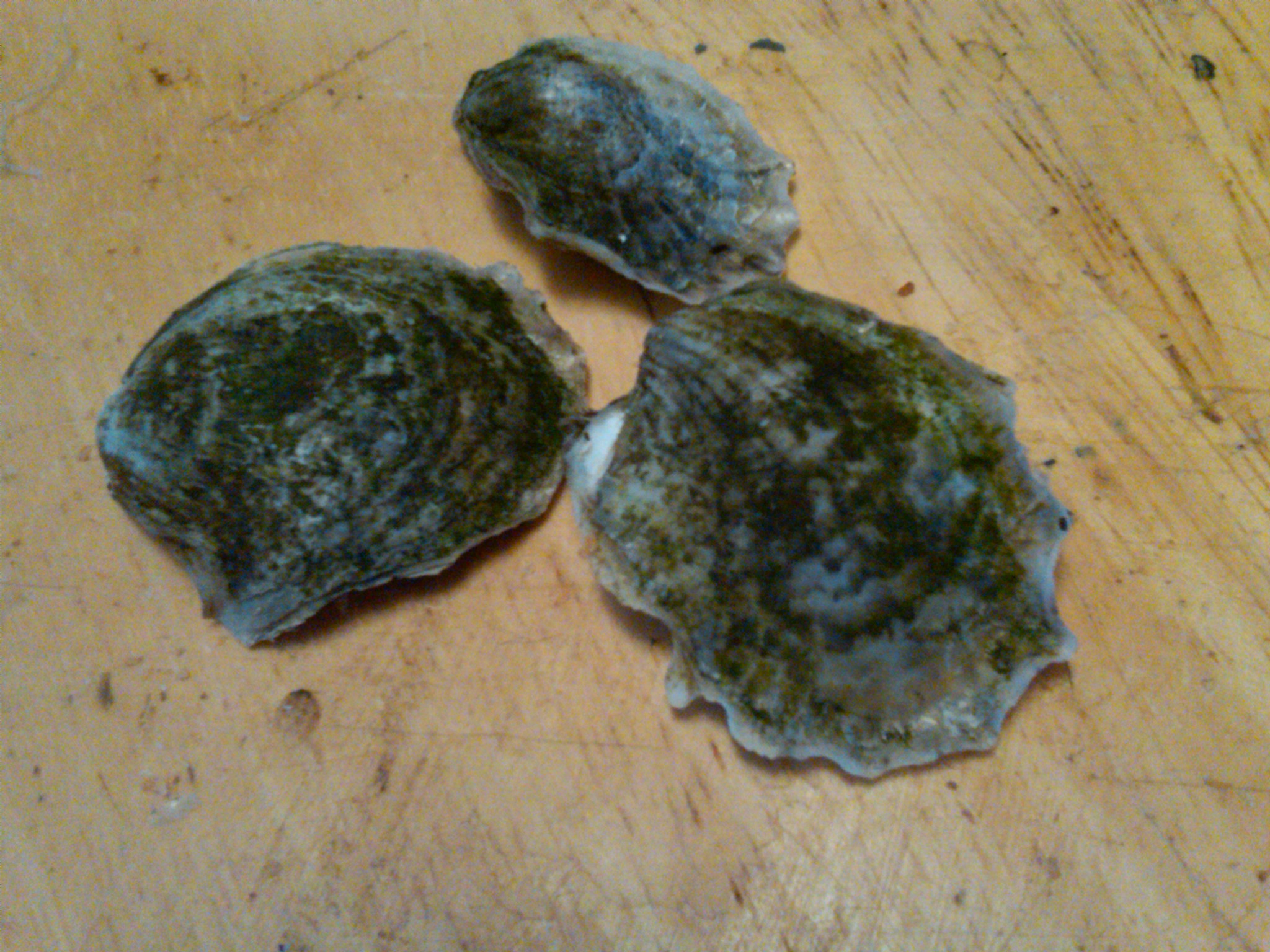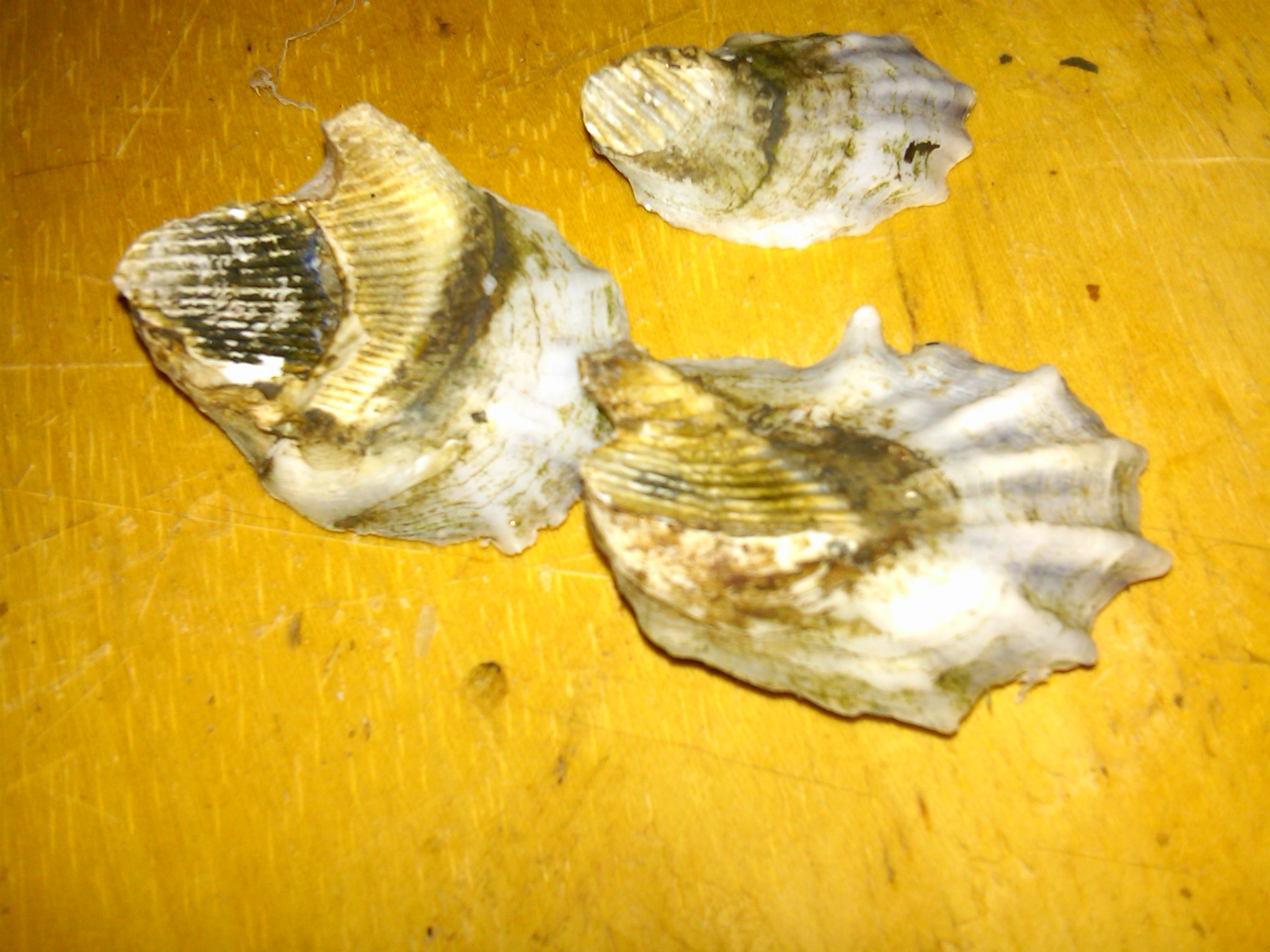I learned something about oysters this weekend. In an experiment designed to test durability of aquaculture equipment, some stray oysters attached to the outside of a plastic mesh. I noticed that all of the oysters adopted a mesh pattern on their top side even though that was not touching the plastic mesh.
Similarly, I’ve noticed that oysters growing on ribbed mussels are more likely to show longitudinal ribs. Until now, I just thought it was due to a protected growth pattern. There must be something published somewhere on this topic, but I haven’t found it yet. Nor do I know of any practical application of this observation. But I’ll keep an eye on the checkered oysters to see if the pattern remains as they continue to grow.
Photos are pasted below:
 oysters grown on mesh (top not touching mesh)
oysters grown on mesh (top not touching mesh)
 oysters grown on mesh (bottom connected to mesh)
oysters grown on mesh (bottom connected to mesh)
 oysters grown on mussels (top not touching mussels) – note the longitudinal veins, not as prominent as on the bottom
oysters grown on mussels (top not touching mussels) – note the longitudinal veins, not as prominent as on the bottom
 oysters grown on mussels (bottom attached to mussels) – note musell rib marks in yellow areas and the longitudinal veins
oysters grown on mussels (bottom attached to mussels) – note musell rib marks in yellow areas and the longitudinal veins

Leave a Reply